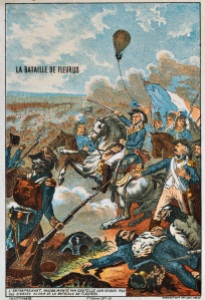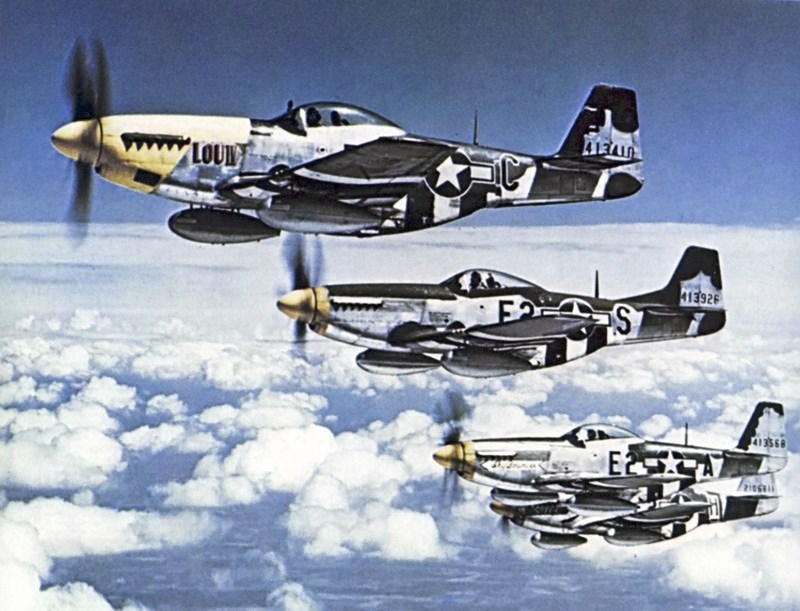
The great, great grand nephew of a U.S. Civil War-era military ballooning pioneer was on hand this week in Buffalo, New York to view a local museum’s working replica of his famous ancestor’s creation.

According to the Buffalo News, Terry Lowe, a descendent of Thaddeus Lowe, founder of the U.S. Army’s balloon corps, travelled from Nebraska to witness the unveiling of the $400,000 reproduction of the vintage 1862 airship.
The Union army used a fleet of seven tethered gas-filled balloons during the Civil War to observe enemy troop movements, plot maps and later when fitted with telegraph systems to direct artillery fire. They were used at Seven Pines, Antietam, Fredericksburg, and a series of other battles.
While Confederate soldiers would do their best to bring down these pesky aerial intruders, the balloons typically would float beyond the range of the enemy guns — 500 feet or higher.
Prof. Lowe, who was preparing for the first ever trans Atlantic balloon voyage at the outbreak of the war, personally demonstrated the military potential of ballooning to President Abraham Lincoln at the White House. Recognizing the benefits balloons would offer his armies, Lincoln directed Lowe to organize a ballooning corps.
While military ballooning may have seemed revolutionary to the armies in the Civil War, the use of them over battlefields was nothing new. In fact, the French army had first employed balloons more than 60 years earlier.
The first successful manned balloon flight in history was made by the Montgolfier brothers in France in 1783. Their balloon was an egg-shaped, silk-sheathed wooden frame. The bottom of their contraption, known as an aerostat, was open and was positioned on a launch pad over of a bonfire. When the interior of the structure filled with heated air, the balloon would lurch skyward and remain airborne until the air inside cooled.

By the 1790s, the French military had adapted lighter-than-air aerostats for battlefield observation. It even established a special balloon unit led by a chemist named Jean-Marie-Joseph Coutelle. The French Aerostatic Corps made its combat debut at the Battle of Fleurus in 1794 with a tethered airship named L’Entreprenant (which means “Enterprising”). The balloon stayed aloft for nine hours, with observers on board reporting Austrian troop movements. After recording the position of enemy units, the crew tossed their written communiqués into the hands of officers on the ground. They could also communicate with their team below using semaphore. When necessary, the balloon was repositioned by a team of French soldiers who held onto the tether and walked it around the battlefield. The ship was used again at the Siege of Mainz.
The entire corps, along with its new balloon L’Intrepide, was captured by the Austrians at the Battle of Würzburg in 1796. The airship is still on exhibit in the HeeresgeschichtlichesMuseum in Vienna. France’s second balloon corps was equally unlucky.
While attached to the army on campaign in Egypt, their equipment and aerostat were lost when the vessel transporting them was destroyed in the Battle of the Nile in 1799.
In the aftermath of these setbacks, French generals grew impatient with battlefield ballooning. Skeptics even doubted if the intelligence provided was all that valuable. The balloon corps was disbanded that same year.
While balloons and aerostats would go on to capture the imagination of the world over the following decades, military ballooning would remain largely dormant until the U.S. Civil War. But by the end of the century, balloons would give way to self-propelled airships and later airplanes. The rest is history.

Interesting facts about balloons on the battlefield:
- During the U.S. Civil War, Union balloonists came up with a novel way to create the first mobile airships. They tethered a balloon to a modified barge and floated it down the Potomac River. This allowed observers to survey more enemy territory. The same method was employed at the Siege of Vicksburg on the Mississippi River. Could these balloon barges hold claim to being the first aircraft carriers?
- The Confederates too experimented with ballooning, initially using fixed frame aerostat designs. These proved unreliable in combat — early models were either destroyed or captured in action. Subsequent attempts with other designs, known as silk dress balloons (named because they were made with fabric normally used for women’s formal gowns) were also attempted with some measure of success in battles in northern Virginia, but these too were lost in action. The high cost of silk made replacing the balloons too expensive. The Confederates soon abandonined ballooning.
- Astonishingly, the Union army (like the French before them) suspended its balloon corps in 1863. After becoming embroiled in a turf war with the army engineering corps over control of the balloon program, Prof. Lowe was forced from the service. His unit was disbanded shortly afterwards.
- In his time with the Army of the Potomac, Lowe made the acquaintance of a 25-year-old Prussian lieutenant sent to America to observe the Union army in action. The young officer was fascinated with Lowe’s balloon and would later bring the technology back to Germany and develop it further. His name was Ferdinand Von Zeppelin.
- Balloons were once again used in battle during the 1867 war between Brazil and Paraguay.
- British Army engineers would experiment with ballooning in 1863. That country’s first military ballooning unit was established in the 1870s and a ballooning training centre was opened at Chatham in 1888. Britain’s first combat use of ballooning came in the campaigns in the Sudan and Bechuanaland in 1885. Later, they would be used again with success in the Boer War.
- By the end of the century, aeronautical engineers were fitting gas powered engines to balloons to create the first self-propelled airships. By the First World War, these flying machines would be used by the Germans to bomb London.










3 thoughts on “The First Air Forces – A Century of Balloons at War”